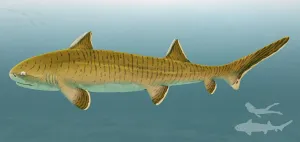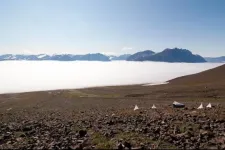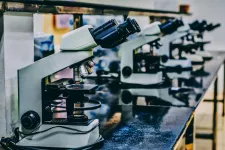(Press-News.org) Making people stand in front of a scanner to have their body temperature read can result in a large number of false negatives, allowing people with Covid-19 to pass through airports and hospitals undetected.
A new study argues that taking temperature readings of a person's fingertip and eye would give a significantly better and more reliable reading and help identify those with fever.
The study, co-led by human physiologist and an expert in temperature regulation, Professor Mike Tipton, is published in Experimental Physiology.
Professor Tipton, of the University of Portsmouth, said: "If scanners are not giving an accurate reading, we run the risk of falsely excluding people from places they may want, or need, to go, and we also risk allowing people with the virus to spread the undetected infection they have."
The study found four key factors:
Temperature alone isn't a good indicator of disease -- not all who have the virus have a fever and many who do, develop one only after admission to hospital;
Measuring skin temperature doesn't give an accurate estimation of deep body temperature (raised in a fever). A direct measure of deep body temperature is impractical;
A high temperature, even one taken from deep body, does not necessarily mean a person has Covid-19; and
Taking two temperature measurements, one of the finger, the other of the eye, is likely to be a better and more reliable indicator of a fever-induced increase in deep body temperature.
Professor Tipton said: "Using a surface temperature scanner to obtain a single surface temperature, usually the forehead, is an unreliable method to detect the fever associated with Covid-19. Too many factors make the measurement of a skin temperature a poor surrogate for deep body temperature; skin temperature can change independently of deep body temperature for lots of reasons. Even if such a single measure did reflect deep body temperature reliably, other things, such as exercise can raise deep body temperature.
"The pandemic has had a devastating global effect on all aspects of our lives, and unfortunately, it's unlikely to be the last pandemic we face. It's critical we develop a method of gauging if an individual has a fever that's accurate and fast."
The most common symptom of 55,924 confirmed cases of Covid-19 reported in China up to February 22, 2020 was fever, followed by other symptoms, including dry cough, sputum production, shortness of breath, muscle or joint pain, sore throat, headache chills, nausea or vomiting, nasal congestion, and diarrhoea.
However, the researchers say a significant proportion (at least 11 %) of those with Covid-19 do not have a fever, and that fewer than half those admitted to hospital with suspected Covid-19 had a fever. Although the majority of positive cases go on to develop a high temperature after being admitted to hospital, they were infectious before their temperature soared.
Professor Tipton said: "We think we can improve the identification of the presence of fever using the same kit but looking at the difference between eye and finger temperature - it's not perfect, but it is potentially better and more reliable."
The same scanners can easily be adapted to take these two measurements.
The new study argues that taking temperature readings of a person's fingertip and eye would give a significantly better and more reliable reading and help identify those with fever.
A change in deep body temperature is a critical factor in diagnosing disease with as little as a one degree increase indicating a potential disease.
The many methods of detecting deep body temperature, widely used in hospitals, are too expensive, invasive and time consuming to be widely used outside hospitals.
Professor Tipton said: "During the SARS epidemic, in 2003, there was a need for a fast, effective mass screening method and infrared thermography became and remains the cornerstone measurement, despite concerns over its reliability."
A 2005 study of 1,000 people comparing forehead temperature with three different infrared thermometers gave different temperatures, ranging from 31 °C to 35.6 °C. The infrared thermometers measurements alone varied by as much as 2 °C. In another study, more than 80 per cent of the 500 people tested using infrared, gave a false negative result.
Such differences in skin temperature could be due to a range of reasons, including whether the individual has recently exercised, has an infection, sunburn or recently drunk alcohol, how close an individual stands to a scanner, how warm or cool the air is, how much fat a person has on their body and even their blood pressure.
ENDS
INFORMATION:
Dinitrogen (N2) fixation is considered as one of the most essential tasks in basic science, providing straightforward methods to produce ammonia and nitrogen-containing molecules. Exploring the reactivity of N2 units of transition metal-nitrogen complexes is of great significance and challenging in the chemistry. Since the first Ru-N2 complex was prepared in 1965, important progress has been made in the synthesis and reactivity of transition metal nitrogen complexes. In many cases, terminal end-on M-N2 complexes as the most prevalent bonding mode were proved ...
In a new study, an international research team led by Sebastian Stumpf from the University of Vienna describes an exceptionally well-preserved skeleton of the ancient shark Asteracanthus. This extremely rare fossil find comes from the famous Solnhofen limestones in Bavaria, which was formed in a tropical-subtropical lagoon landscape during the Late Jurassic, about 150 million years ago. The almost complete skeleton shows that Asteracanthus was two-and-a-half meters long in life, which makes this ancient shark one of the largest of its time. The study is published in the journal Papers in Palaeontology.
Cartilaginous fishes, which include sharks and rays, are one of the most successful vertebrate groups still ...
Climate and changes in it have direct impacts on species of plant and animals - but climate may also shape more complex biological systems like food webs. Now a research group from the University of Helsinki has investigated how micro-climate shapes each level of the ecosystem, from species' abundances in predator communities to parasitism rates in key herbivores, and ultimately to damage suffered by plants. The results reveal how climate change may drastically reshape northern ecosystems.
Understanding the impact of climatic conditions on species interactions is imperative, as these interactions include such potent ecological forces as herbivory, pollination and parasitism.
Lead researcher Tuomas Kankaanpaa from the Faculty of Agriculture and Forestry, University of Helsinki, investigated ...
Astronomers using images from Kitt Peak National Observatory and Cerro Tololo Inter-American Observatory have created the largest ever map of the sky, comprising over a billion galaxies. The ninth and final data release from the ambitious DESI Legacy Imaging Surveys sets the stage for a ground-breaking 5-year survey with the Dark Energy Spectroscopic Instrument (DESI), which aims to provide new insights into the nature of dark energy. The map was released today at the January 2021 meeting of the American Astronomical Society.
For millennia humans have used maps to understand and navigate our world and put ourselves in context: we rely on maps to show us where we are, where we came from, and where we're going. Astronomical maps continue this tradition on a vast scale. They ...
University of Otago researchers have added another piece to the puzzle about how best to translocate New Zealand lizards for conservation purposes - confine them.
In a paper just published in the New Zealand Journal of Ecology, the Department of Zoology researchers outlined how they translocated 19 barking geckos to Mana Island, using the method of penned release - enclosing them in a 100m² pen for three months so they get used to the site and hopefully establish a breeding population.
It was the first time such a method had been used with the species and the researchers found it worked well. The geckos' area use decreased over time, indicating ...
There are many components to aging, both mental and physical. When it comes to the infrastructure of the human body - the musculoskeletal system that includes muscles, bones, tendons and cartilage - age-associated decline is inevitable, and the rate of that decline increases the older we get. The loss of muscle function -- and often muscle mass -- is scientifically known as sarcopenia or dynapenia.
For adults in their 40s, sarcopenia is hardly noticeable -- about 3% muscle mass is lost each decade. For those aged 65 years and older, however, muscle decline can become much more rapid, with an average loss of 1% muscle mass each year. More importantly, sarcopenia is also marked by a decrease ...
Since 2013, China has implemented the strictest ever air pollution control policies, which resulted in substantial reductions in aerosol concentrations.
However, extreme and persistent haze events frequently occur during wintertime in China. In winter haze events, aerosol-related reductions of surface solar radiation (SSR) have comparable impacts on clouds over eastern provinces.
Recently, researchers from the Institute of Atmospheric Physics (IAP) of the Chinese Academy of Sciences and the Pacific Northwest National Laboratory of the United States (PNNL) and their collaborators conducted a study to further understand the underlying chemical mechanisms driving winter haze events and how ...
A new type of stem cell - that is, a cell with regenerative abilities - could be closer on the horizon, a new study led by UNSW Sydney shows.
The stem cells (called induced multipotent stem cells, or iMS) can be made from easily accessible human cells - in this case, fat - and reprogrammed to act as stem cells.
The results of the animal study, which created human stem cells and tested their effectiveness in mice, was published online in Science Advances today - and while the results are encouraging, more research and tests are needed before any potential translation ...
Males are more likely to test positive for COVID-19, more likely to have complications and more likely to die from the virus than females, independent of age, according to a new study published this week in the open-access journal PLOS ONE by Farhaan Vahidy of Houston Methodist Research Institute, US, and colleagues.
As the COVID-19 pandemic unfolds and evolves across the globe, researchers have identified population sub-groups with higher levels of disease vulnerability, such as those with advanced age or certain pre-existing conditions. Small studies from China and Europe have indicated that males tend to experience higher disease ...
KAIST metabolic engineers presented the bio-based production of multiple short-chain primary amines that have a wide range of applications in chemical industries for the first time. The research team led by Distinguished Professor Sang Yup Lee from the Department of Chemical and Biomolecular Engineering designed the novel biosynthetic pathways for short-chain primary amines by combining retrobiosynthesis and a precursor selection step.
The research team verified the newly designed pathways by confirming the in vivo production of 10 short-chain primary amines by supplying the precursors. Furthermore, the platform Escherichia ...





